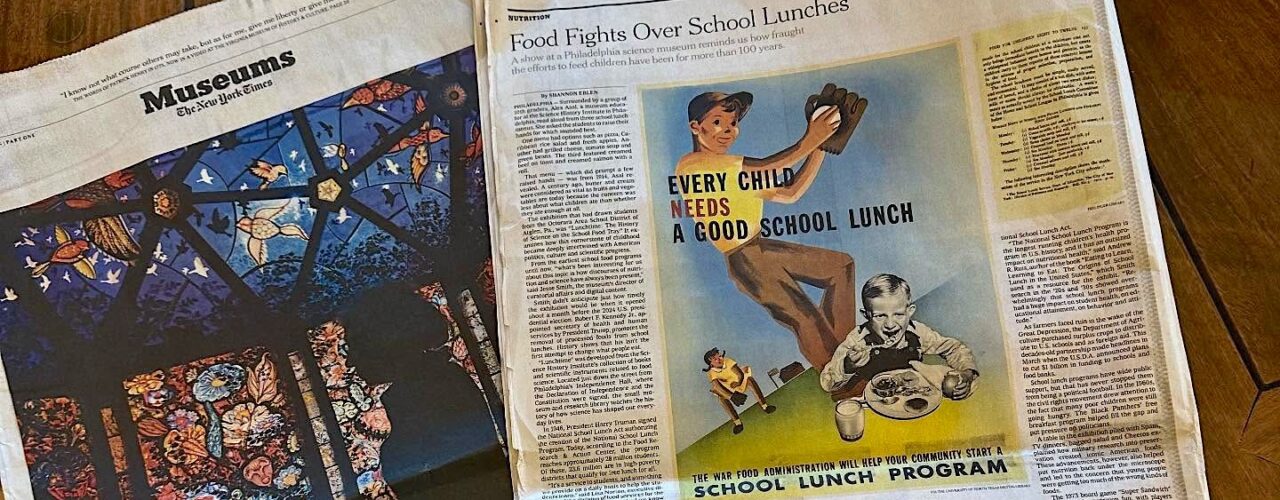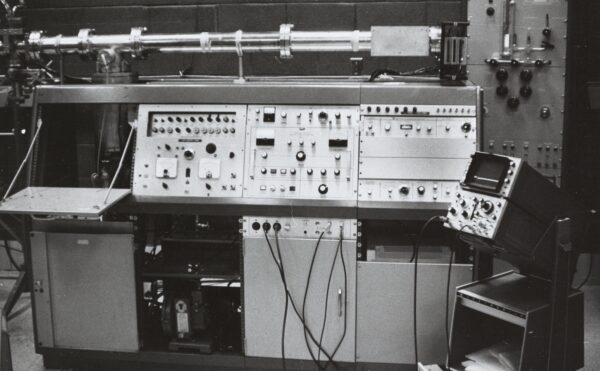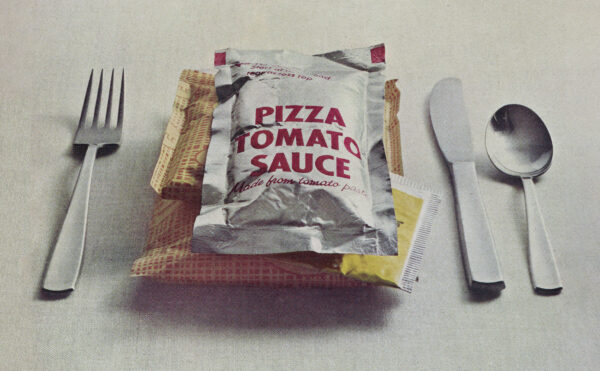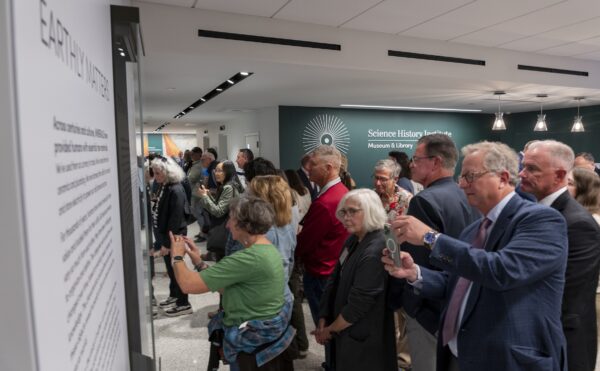
Science History Institute Featured in ‘New York Times,’ ‘PhillyVoice’
Museum staff share their insights into our Lunchtime exhibition and a coconut from our collections used in early MRI imaging research.
The Science History Institute’s latest exhibition, Lunchtime: The History of Science on the School Food Tray, was featured in the New York Times in its Museums special section about how artists and institutions are adapting to changing times. The online version titled “If You Think the School Lunch Battle Is New—Go to Philadelphia” was published on April 23 and the full-page print version titled “Food Fights Over School Lunches” appeared in the April 27 issue. The exhibition was also included on the cover of the Museums special section.
Lunchtime curator Jesse Smith and museum educator Alex Asal, who was giving a school tour during the journalist’s visit to the Institute, are both quoted in the article. “From the earliest school food programs until now, what’s been interesting for us about this topic is how discourses of nutrition and science have always been present,” said Smith.
Commenting on how food manufacturers in the 1800s would cut corners, mixing wood shavings with cinnamon and chalk into flour, Asal added: “Probably the most notorious example was the dairy industry, which routinely added formaldehyde to milk to keep it from spoiling.”
On view through January 2026, Lunchtime looks back at the history of feeding children in U.S. schools and reminds us how fraught the efforts have been for more than 100 years.
The Institute was also recently featured in the PhillyVoice as part of its Inside the Archives series, which spotlights unique items found in the collections of different museums throughout the city. The April 28 article talks about one of the Institute’s quirkiest objects: a coconut. Michelle DiMeo, vice president of collections and programs, explains how the tropical fruit was used by Nobel Prize-winning chemist Paul Lauterbur to create the first 3-D MRI images in the 1970s.
“You know what an MRI is,” DiMeo said. “Maybe you’ve had one or someone you love had one, but you don’t know the story behind it. And the story I think is actually a really fun one, of experimenting with things that maybe seem forbidden at the beginning. It’s a story of creativity and it’s a story of trying to help people and getting some of the work that was happening in the lab to be extracted from an analytical chemistry setting to something that has practical benefits for people.”
The coconut is part of a collection the Institute acquired from Lauterbur’s widow after his death in 2007. Among the roughly 50 boxes are papers, slides, and other objects, including the notebook where he recorded his breakthrough idea about MRI imaging.
Featured image: Detail of the article on Lunchtime in the April 27 issue of the New York Times.
More News
Melissa Sherman Joins Science History Institute’s Board of Directors
The MOBILion Systems founding CEO will help support the Institute’s mission and strengthen our relationships in the life sciences industry.
Science History Institute Hosts Food Drive to Support Philadelphia’s Old Pine Community Center
Donations of non-perishable items can be dropped off in the Institute’s lobby now through December 19.
Science History Institute Unveils New Mineral Exhibition at Packed Opening Celebration
Ribbon cutting officially opens Earthly Matters and brand-new gift shop, marking the completion of the Institute’s major lobby renovation.



